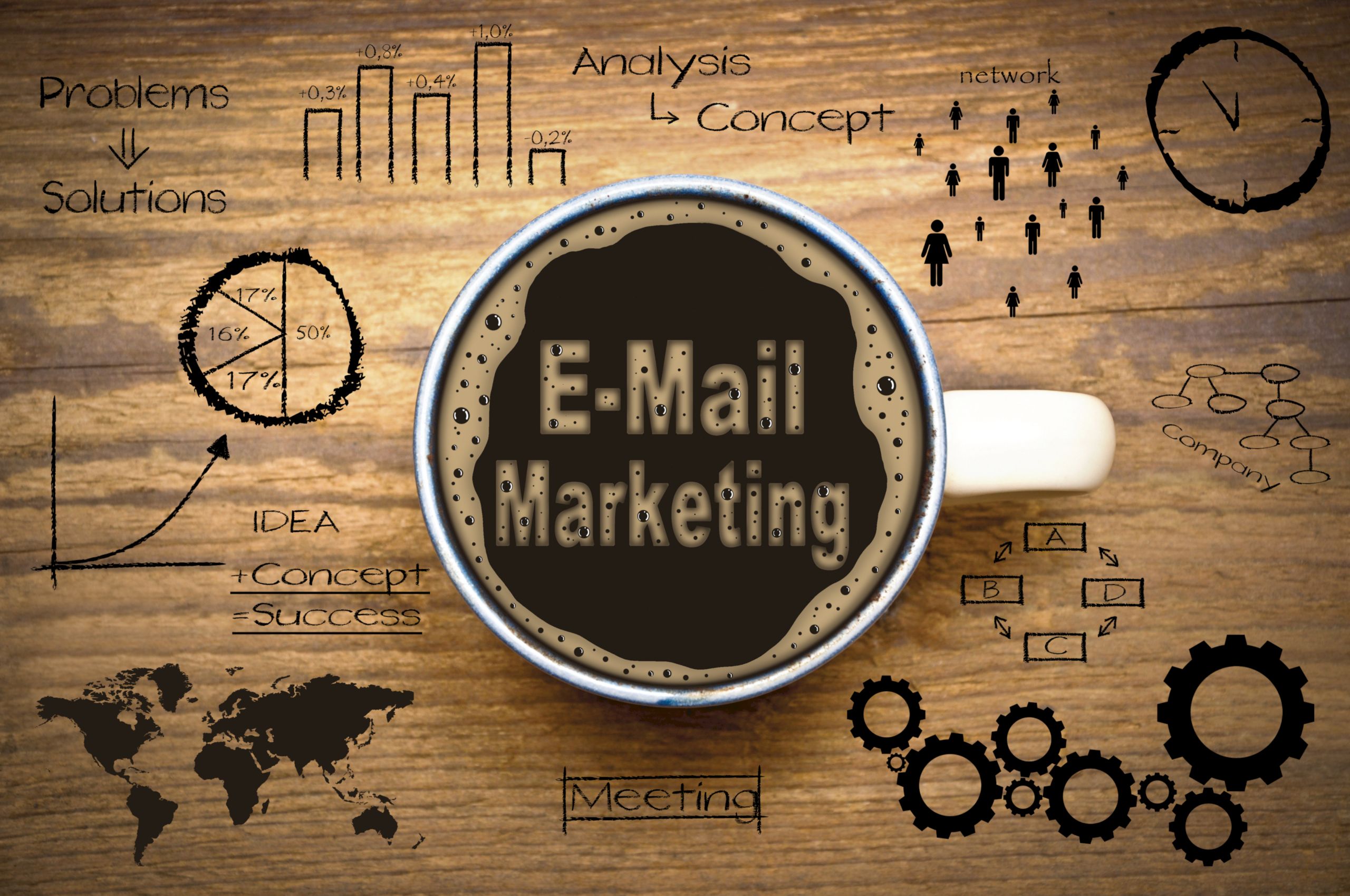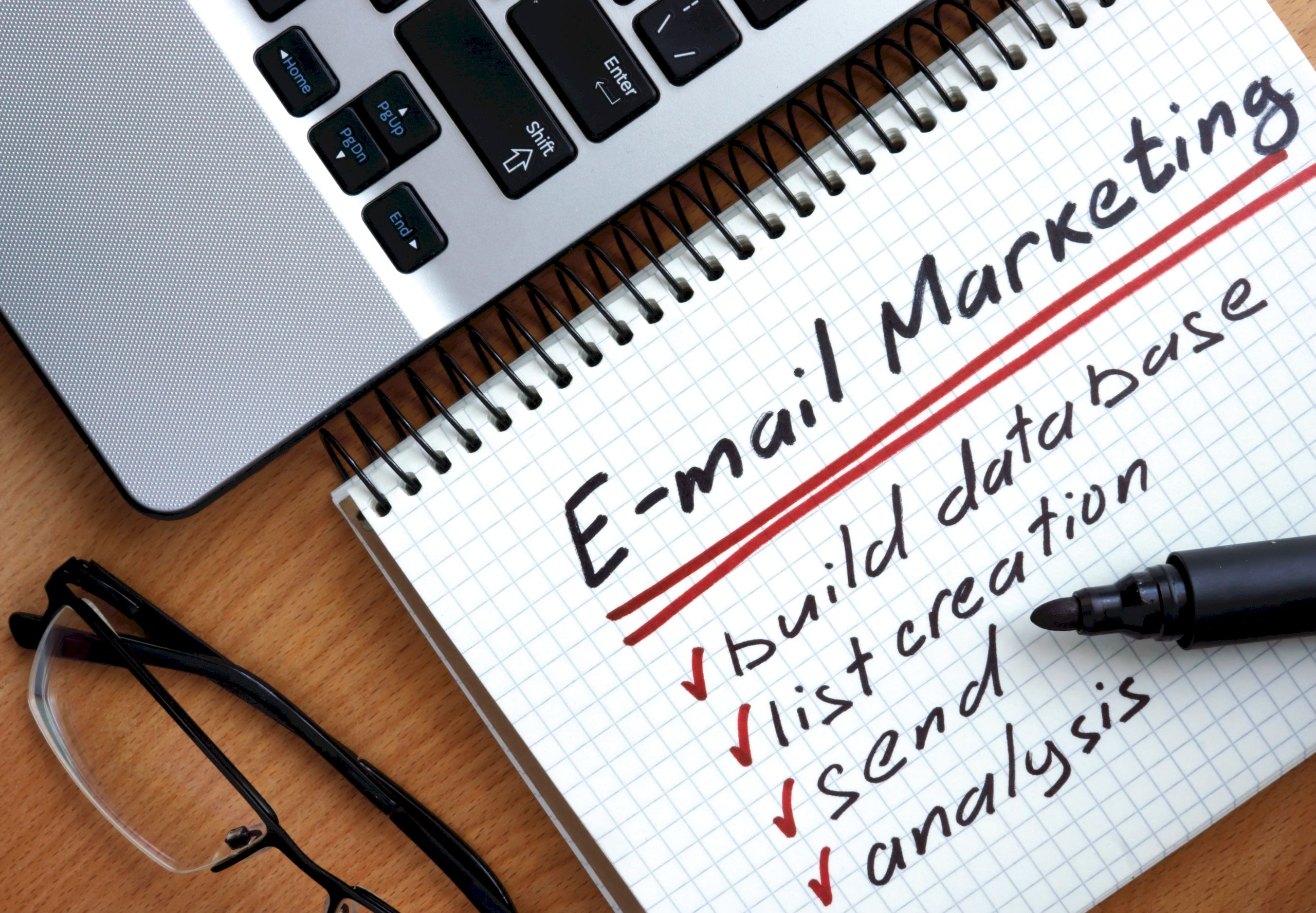Email turns 50 years old in 2021. Over the years of email marketing, tales of its demise have been greatly exaggerated.
Yeah, it's old. (Ok, older.) And it surely can't match the eye candy on Instagram or Pinterest or keep the beat with Tik Tok. But email marketing works. People still depend on email campaigns.
According to a recent survey, 90% of 15-24-year-olds use email and so do 84.1% of senior citizens. Everyone in between (ages 25-64) uses it even more.
More than half of the world’s population use email, according to the Radicati Group. In fact, the number of worldwide email users is projected to grow to 4.3 billion by 2023.
From a business perspective, the average office worker receives 121 emails a day and sends out 40 emails each work shift. But take note: All these numbers mean you must do a better job at email marketing because the competition for eyeballs in inboxes is fierce.
Let’s take a closer look at four key components of email marketing that underscores why this old-school tactic still works:
Subject Lines Move You
Email marketing is all about the relationship behind the email. This is an important point, one that will answer the question about why you didn’t get any results from that list you just bought from a broker.
Here’s the good news: Relationships are everything. After all, business is just another word for relationship. But here’s the bad news about relationships: They are often inconvenient, and they take a lot of time. That’s why speaking directly to your prospects with a powerful subject line is so important. It can start a new relationship or add another nurturing touchpoint to an existing relationship.
A strong conversion rate for email campaigns is somewhere in the range of 2%-5%, according to a study by Wordstream. Campaign Monitor’s research suggests a typical open rate is 15%-25% and an average click-through rate is 2.5%.
.jpg)
You will need powerful words to create a subject line that will compel action. Based on research, using words like “Invitation” (+9.45%) and “Introducing” (+7.36%) as the first word in your subject line will increase open rates. Using words that suggest a relationship, such as “We” (+5.87) and “You” (+4.07%), as the first word also increases open rates.
Other hacks include adding a number to the subject line and an emoji. Both elements increase opens on their own.
People Buy Stories
Your prospects are probably too busy to read targeted emails, unless it helps them. People do business with people they like, and people like people who help them.
So the next time you prepare to send an email, make sure that it’s helpful to your intended prospects or existing customers.
A story is a great way to capture someone’s attention—and it doesn’t have to be a long story. When it comes to an email, quickly moving to the value proposition is a good strategy.
Sometimes, the short story in your email will highlight the special features of an upcoming event or a new product or service. Just make sure you write the email from the perspective of the prospect, meaning the person who will receive your email. Personalization is another tactic that works with emails, and it goes far beyond using someone’s name. On a deeper level, it’s about connecting with the person through their pain points and experiences. Once you are able to hit that target, you will have higher conversion rates and a much more valuable email list.
When possible, emotion is one lever you should pull when drafting compelling copy for emails.
Harvard professor Gerald Zaltman reveals that consumers are driven by emotional urges when it comes to making purchases. In other words, emotion drives purchasing behaviors and decision-making, which Zaltman explains in “How Customers Think: Essential Insights into the Mind of the Market.”
From a marketing perspective, this research suggests that promoting a product or service around its attributes will produce poor results because it misses the human element of the decision-making process. If you want your customers and prospects to remember your brand, you must get them engaged through interaction with your company.

More Involvement Equals More Commitment
Emails are much more than electronic messages that keep pinging your smartphone. Strategically speaking, each email is a delivery system, pushing 1)“trigger” words that will motivate your audience to take action and 2) links that will help your audience direct their action.
Can you imagine sending your customers an email filled with nothing but a list of words and links? That wouldn’t work, which is why you want to wrap the goods in a story that will make the words and links digestible and memorable.
When it comes to trigger words, it will greatly depend on your audience and their pain points, so it will be a case-by-case decision. However, “framing” the content can be a little more predictive.
“Framing” is really another word for “packaging” when it comes to content. What you say isn’t as important as how you say it.
Leveraging a buyer’s journey format is one way to really connect with your customers and prospects. As a consumer, we all go through a certain buy-cycle before we make a purchase. Writing content in a way that directly addresses each stage in the process will help your brand connect with more people on your email list.
For example, we start the process in the “Awareness” stage, which signals to us that we have a problem that needs to be fixed. The objective of your content should be to reinforce the problem and its negative consequences to motivate your audience into taking further action.
Once your intended target audiences know they have a problem, they move to the “Consideration” stage. At this point, your content should appear as a checklist that walks your prospects down the sales funnel, leading them to the purchase. If possible, you should maximize this opportunity by embedding links throughout the list, directing your audience to high-value pages on your website.
The “Decision” stage happens when your prospects are ready to make the purchase. Your content should look like a case study or a success story or a press release, all of which showcases your brand as the solution to a problem.
Measure So You Can Manage
Every part of your marketing program throws off data. And data talks. The only question is, “Are you listening?”
Email marketing platforms are no exception. In fact, there are several metrics that you should constantly review to access the effectiveness of your campaign and how to make it better. Embracing continuous improvement is all about feedback, not failure.
Consider a few key performance indicators (KPIs) that will help you elevate the email marketing campaign:
Open Rate: In email drip campaigns, this one sounds simple and straightforward, but it’s not. The open rate tells you the percentage of people on your list who opened your email….kind of. An email is only counted as “open” if the recipient receives the images embedded in the message. If that person has enabled their image-blocker, then they will not be counted as “opened” even though they were. In addition, emails read in the preview setting are not counted as opened either. This metric should be used as a loose guide with the understanding that it is undercounted. Example: 3,000 total clicks/10,000 delivered emails x 100 = 30% Click-Through Rate: CTR is important because it tells you how many people on your list are really interested in what you are promoting, and they want more information. Example: 1,000 total clicks/10,000 delivered emails x 100 = 10%
Bounce Rate: This metric includes “hard” bounces and “soft” bounces. A hard bounce means the email address is no longer valid. A soft bounce suggests there may be an issue on the receiver’s side (i.e. full inbox). Stay on top of the hard bounces; you don’t want an internet service provider to think you’re a spammer. An email is like a garden, which needs constant weeding. Here’s the math: 100 bounced emails/10,000 total emails sent x 100 = 1%.
Unsubscribes: This number tells you how many recipients no longer want to receive your emails. Sometimes, this is a good thing. Other times, not so much. If you have a highly targeted email list, the unsubscribes can hurt. In that case, you should be asking questions and trying new tactics to stem the exodus. However, if you have a relatively new list that has a lot of new email addresses, a higher churn rate may be a good thing because it may be refining itself, leaving those individuals who are very interested in what you are selling. The equation is the same: 100 unsubscribed emails/10,000 total emails sent x 100 = 1%.
Conversion Rate: This one is bottom-line important. It tells you how many prospects completed the desired action. So how many went to the registration page? How many went to the “Locate Your Sales Rep” page? Example: 500 people completed the action/10,000 emails delivered x 100 = 5%.
Email marketing may not be bright and shiny. It will not bedazzle anything. But it still works.
Is email marketing part of your marketing plan? Contact us today, to get the conversation started.
